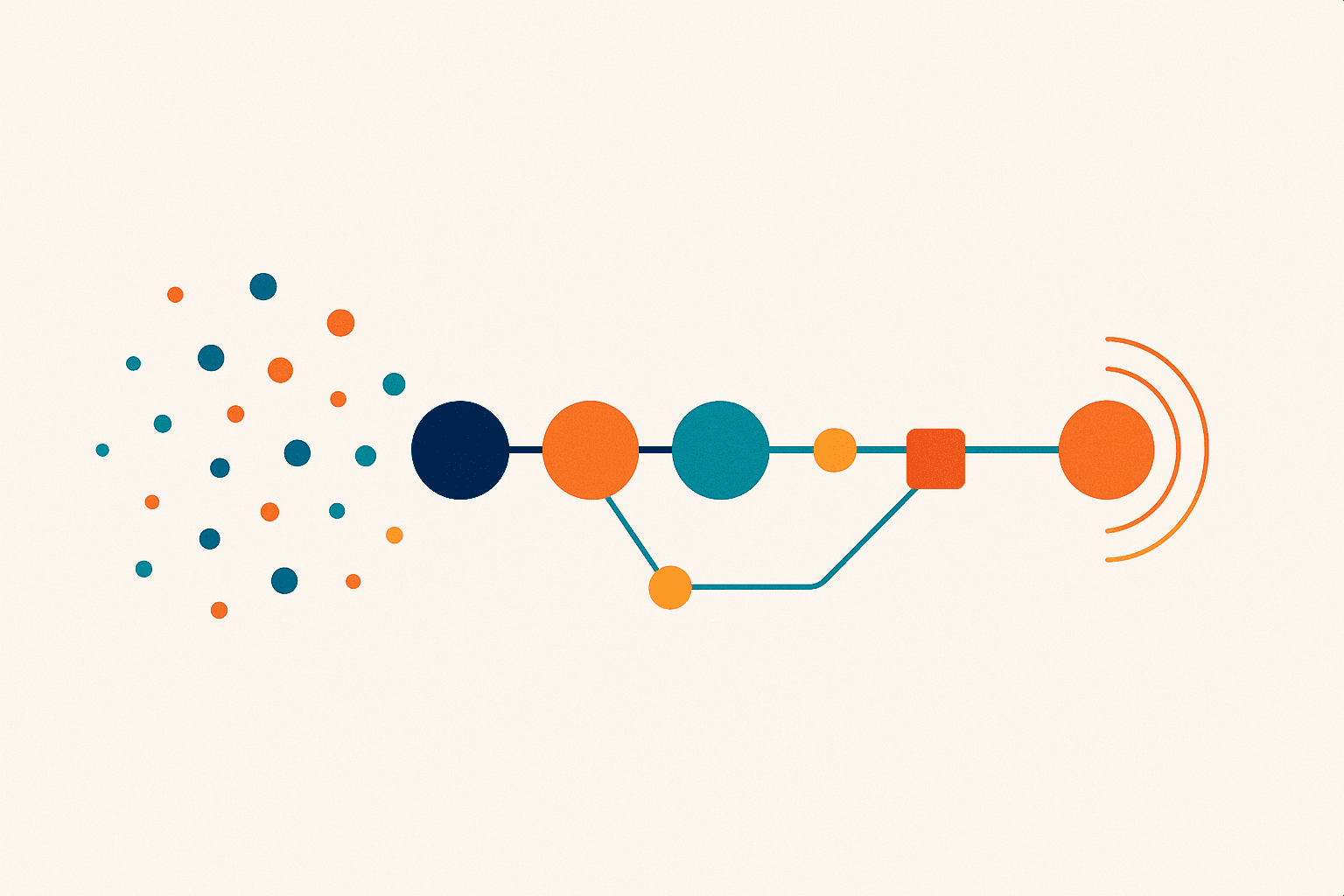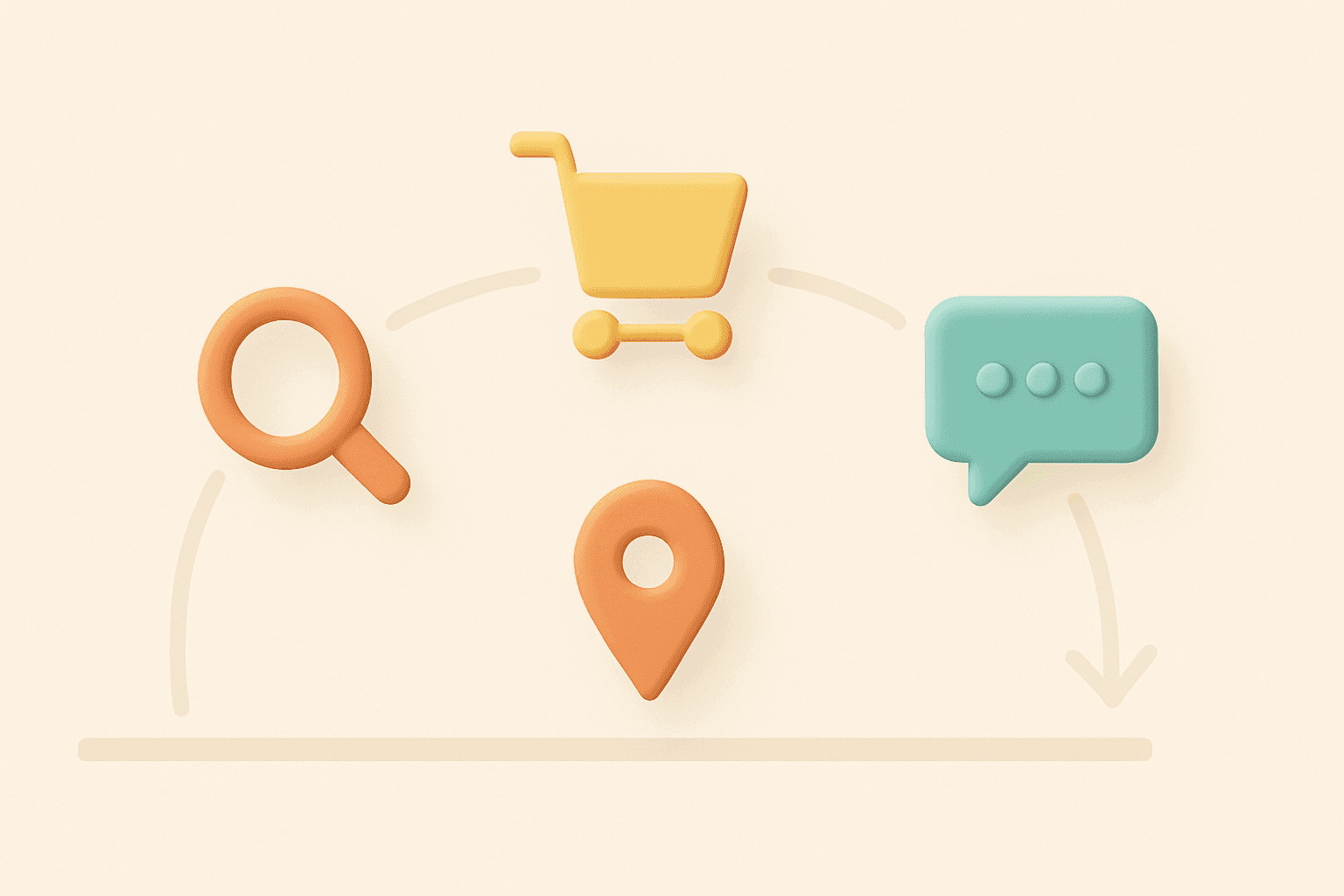Top 10 Omnichannel Retail Trends Shaping Commerce in 2025
More than 73% of consumers now use multiple channels when they shop—and they expect those channels to work together.
Yet only 29% say they get consistent experience. That gap is where revenue gets lost or gained.
Omnichannel today is about making every channel feel connected. That means real-time inventory, AI-powered personalization, and a unified customer profile.
This article breaks down 10 omnichannel trends shaping how brands sell, serve, and scale in 2025. Before we proceed, some latest industry insights for you to consider:
-
Companies with strong omnichannel strategies retain 89% of customers.
-
Omnichannel shoppers deliver 30% higher lifetime value.
-
Purchase rates are 250% higher on omnichannel platforms than single-channel setups.
Top 10 Omnichannel Commerce Trends to Watch in 2025
These 10 omnichannel trends reveal how leading brands are adapting to evolving buyer behavior, fulfillment demands, and platform shifts.
1. Mobile-First Commerce Becomes the Default Omnichannel Experience
Mobile is now the command center of the customer journey, shaping how consumers discover, decide, and buy.
According to Oberlo’s August 2024 report, mobile commerce accounted for 57% of all global eCommerce sales in 2024, on track to reach 63% by 2028.
Cropink’s 2025 mobile commerce report projects an even steeper shift, with $6.5 trillion in m-commerce revenue expected this year alone.
Retailers are moving from responsive design to mobile-native design logic. Think app-exclusive promotions, geo-personalized offers to QR-triggered in-store flows. And it’s not just DTC: B2B buyers now expect mobile ordering portals with real-time inventory and customer-specific pricing.
New expectation: One-tap checkout, real-time order edits, and push-to-text support built directly into mobile commerce flows.
What’s new in 2025:
-
On-device intelligence: Mobile apps that sync with AI to deliver context-aware UX (e.g., weather-based product highlights, delivery slot prediction).
-
Micro-personalization at scale: Loyalty tier-based mobile content that updates dynamically.
-
Embedded commerce: Commerce integrated inside messaging apps, payment apps, and even wearable extensions.
2. AI-Powered Personalization Evolves Into Self-Optimizing Systems
Forget “customers also bought.” In 2025, AI personalization means agentic systems that learn from every click, return, and support ticket, then automatically adjust product displays, promotions, and fulfillment suggestions in real time.
Leading retailers are training foundation models on first-party behavior to create individual-level experiences:
-
Dynamic merchandising by persona and channel
-
AI that adjusts pricing elasticity based on shopper likelihood to convert
-
Language and tone adjustments based on engagement history
60% of retailers plan to increase AI investment in 2025, but the leaders are deploying agentic AI. These systems don’t just react, but they improve autonomously across every touchpoint.
What’s new in 2025:
-
Synthetic shoppers: AI agents modeled on real segments to stress-test campaigns and UX.
-
AI-driven UGC: Personalized product content (e.g., reviews, video overlays) tailored by shopper cohort.
-
Autonomous A/B testing: AI tools now run and adjust multivariate tests across web, email, and in-store displays—without manual input.
3. Social Commerce Becomes a Core Omnichannel Sales Channel
Social commerce isn’t just happening on TikTok or Instagram anymore and now operates as a series of platform-specific ecosystems. Each with unique buying behavior and expectations.
2025 buyers are treating each platform differently:
-
Instagram: Still dominant for DTC lifestyle and product drops
-
TikTok: Driving impulse discovery via creator videos and live commerce
-
YouTube Shorts & WhatsApp: Emerging commerce layers—less polished, more community-driven
-
B2B: LinkedIn now testing product tagging in posts and affiliate-style brand pages
31% of shoppers now start product discovery on social, but expect native checkout, not redirection. The rise of in-app fulfillment and creator-affiliated customer service is changing who owns the sale and the experience.
What’s new in 2025:
-
Shopper-creator collab tools: Buyers can co-create bundles with influencers in live streams
-
Localized social selling: Region-specific content moderation and pricing tied to currency and delivery logic
-
Channel-specific loyalty: Brands offering rewards for social-based purchases and shares
4. Predictive Inventory Visibility Becomes a Core Fulfillment Strategy
In 2025, shoppers don’t just want to know what’s in stock but also want confidence that what they’re seeing is accurate, up-to-date, and actionable.
But most “real-time” systems still lag at the edge. Leaders are now investing in predictive inventory visibility that uses advanced AI to forecast demand by location, personalize product availability by shopper cohort, and sync availability across POS, app, and marketplaces.
Shoppers exposed to accurate inventory info convert 60% faster, while out-of-stock frustrations are the #1 cause of mid-journey abandonment in omnichannel flows.
What’s new in 2025:
-
Inventory-as-content: Personalized availability messaging by ZIP code, loyalty tier, or urgency triggers (“only 2 left in your size at your local store”).
-
AI-driven allocation: Systems re-route inventory dynamically based on clickstream data and cart behavior.
-
Transparent lead times: Retailers now surface fulfillment speed and stock replenishment ETA up front—not just product status.
5. Experiential Retail Becomes a Revenue-Driving Omnichannel Layer
Retailers used to think of “experiential” as a brand play. In 2025, it’s a conversion lever and a core part of the omnichannel loop.
Think beyond AR mirrors. Smart retailers are embedding logistics, loyalty, and data capture into their physical stores.
-
QR-linked digital shelves that track interest
-
Bookable in-store demos that generate shopper profiles
-
Inventory-aware displays showing what’s available right now
The goal is to sync digital signals with in-store activity to drive conversion and deepen retention.
What’s new in 2025:
-
Experience-linked fulfillment: Try in-store, ship from warehouse. Or vice versa. The experience and logistics are now decoupled but coordinated.
-
Sensor-powered personalization: Interactive displays adapting based on app check-ins, loyalty ID, or device proximity.
-
Event-based commerce: Physical spaces used for live stream events or social-first drops, with hybrid checkout across in-store and digital.
These trends sound great until Black Friday traffic hits. Our BFCM guide covers what actually survives peak season.
6. Composable Fulfillment Becomes the Backbone of Omnichannel Logistics
Same-day delivery used to be a premium. In 2025, it's expected. But speed without context-aware orchestration creates waste.
Leading retailers are now running composable fulfillment stacks by mixing and matching fulfillment nodes (DCs, stores, dark stores, micro-fulfillment centers) based on what the customer cares about most: speed, sustainability, price, or pickup location.
The real edge is choosing the right path, per order, in real-time.
What’s new in 2025:
-
Smart orchestration engines: Fulfillment systems that optimize per customer, per SKU, per location.
-
Carbon-aware routing: Brands offering low-emission fulfillment options as default in green-conscious regions.
-
Composable returns: Dynamic return methods based on product type, return reason, and loyalty status—BOPIS becomes BORIS, becomes doorstep pickup.
7. First-Party Data Powers Personalization and Operational Efficiency
First-party data now drives everything—from discovery to returns—by powering real-time, personalized experiences.
Retailers in 2025 are rethinking consent flows, loyalty programs, and in-store interactions to collect richer behavioral data, ethically and transparently. The focus isn’t on more data. It’s on clean, contextual, and connected data.
Retailers with strong first-party data strategies are seeing up to 20% lift in conversion through smarter segmentation and more accurate inventory allocation.
What’s new in 2025:
-
Value-exchange design: Incentivized data capture through micro-personalizations (e.g., “tell us your fit issues, get a curated try-on kit”).
-
Consent-based identity graphs: Stitching customer data across channels without relying on third-party cookies or device IDs.
-
Real-time sync with AI systems: Enabling up-to-the-minute personalization—not next-day batch updates.
8. Omnichannel Expands into B2B, DTC, and Multi-Model Commerce
The biggest omnichannel shift in 2025 is not about retail at all.
B2B buyers now expect B2C-grade experiences: real-time inventory, mobile ordering, self-serve portals, and pricing transparency. Meanwhile, DTC brands are scaling via pop-ups, physical retail partnerships, and conversational commerce.
71% of B2B buyers now make over half their purchases through digital channels—and expect consistent pricing, catalogs, and service across them.
What’s new in 2025:
-
Multi-model storefronts: Platforms that handle B2B, DTC, and wholesale under one stack—with segmented pricing, permissions, and workflows.
-
AI-powered CPQ for B2B: Quoting tools integrated into ecommerce flows for complex, high-ticket products.
-
Hybrid CX orgs: Teams structured to support both high-volume self-serve orders and personalized sales-assisted journeys.
9. Sustainable Omnichannel Logistics Influence Customer Loyalty in 2025
In 2025, customers demand visibility and control over the environmental impact of their purchase decisions.
Retailers are responding by embedding sustainability into every part of the experience—from carbon-conscious shipping options to visible packaging impact scores and incentivized returns.
A 2025 Blue Yonder survey found that 78% of consumers consider sustainability very important when choosing to buy a product or shop at a retailer and almost 65% are willing to spend more money on sustainable product.
What’s new in 2025:
-
Sustainable default logic: Lower-emission delivery routes prioritized by default, with opt-outs—not opt-ins.
-
Transparency tools: Packaging carbon footprints and return route emissions shown at checkout.
-
Reverse logistics as loyalty: Smart returns that reward customers for eco-friendly options like consolidated pickup or local drop points.
10. Unified Customer Profiles Enable Real-Time Omnichannel Experiences
Personalization doesn’t work if it’s built on fragmented data.
In 2025, unified profiles are evolving from CRM fields into real-time, dynamic shopper graphs—connecting behavior, preferences, purchase history, support tickets, and even in-store interactions into a single, actionable view.
Unified profiles power everything: tailored product discovery, smarter fulfillment logic, predictive customer support, and even curated returns flows.
What’s new in 2025:
-
Edge-synced profiles: Customer data follows them from mobile app to kiosk to in-store rep—updated live.
-
AI-enhanced next actions: Profiles now inform not just marketing, but logistics (“ships from warehouse X based on reorder pattern”) and CX (“route to agent who handled last issue”).
-
Orchestration-ready: Profiles structured to feed orchestration engines—not just dashboards.
These trends sound great until Black Friday traffic hits. Our BFCM guide covers what actually survives peak season.
How Leading Brands Are Executing Omnichannel Trends in 2025
Major retailers globally are moving beyond theoretical strategies to implement practical omnichannel solutions, offering insights into real-world operations and results.
Whole Foods Closing the Loop Between Inventory, Mobile, and Personalization with AI
Whole Foods’ 2025 AI rollout orchestrates inventory and promotions in real time across digital and physical touchpoints.
Their system uses shelf-level sensors and historical Prime data to predict out-of-stock risks before they happen.
When a customer walks in (or opens the app nearby), they're shown inventory-aware product swaps—items that are in stock, align with past behavior, and are eligible for a time-sensitive Prime offer.
These recommendations surface in-store (smart kiosks, shelf displays) and in the Amazon app, synced dynamically.
The result? Fewer abandoned trips, better conversion on substitute SKUs, and a tighter mobile-to-store feedback loop—executing real-time personalization without requiring human intervention.
Omnichannel trend in action: Predictive inventory + mobile-first loyalty + AI-led merchandising as a responsive, personalized in-store experience that adapts to both supply and shopper behavior.
Reliance Retail: Dark Stores Power Fast Fulfillment Across Channels
Reliance Retail has moved beyond click-to-cart into click-to-curbside logistics by leveraging dark stores as the backbone of its omnichannel operations.
With demand for quick-commerce and reliable local fulfillment surging, Reliance has expanded its network of dark stores across urban India. These stores—not open to walk-ins—are built to fulfill online orders hyper-locally, enabling 30-90 minute deliveries via JioMart and third-party platforms.
Here’s the omnichannel impact:
-
Online orders are dynamically routed based on inventory proximity, traffic patterns, and SLA constraints.
-
The same dark store may fulfill orders placed on JioMart, WhatsApp, or ONDC—unifying commerce across platforms and channels.
-
Inventory logic is shared across Reliance’s broader retail ecosystem (e.g., Trends, Smart), creating stock fluidity between dark stores and physical locations.
Omnichannel trend in action: Composable fulfillment + last-mile orchestration + platform-agnostic inventory = an elastic retail backbone that meets India’s regional diversity and instant delivery expectations.
Ready for Omnichannel That Works in 2025?
Omnichannel is a business model. One that spans data, design, fulfillment, and experience, and the gap between intent and execution is what separates the leaders from everyone else.
If you’re not sure where to start:
-
Audit your current stack
-
Align tech with your most frequent buyer journeys
-
Build one layer of personalization or orchestration and then scale from there
And if you're looking for a partner who’s done this before? Drop us a line at hello@coderapper.com




